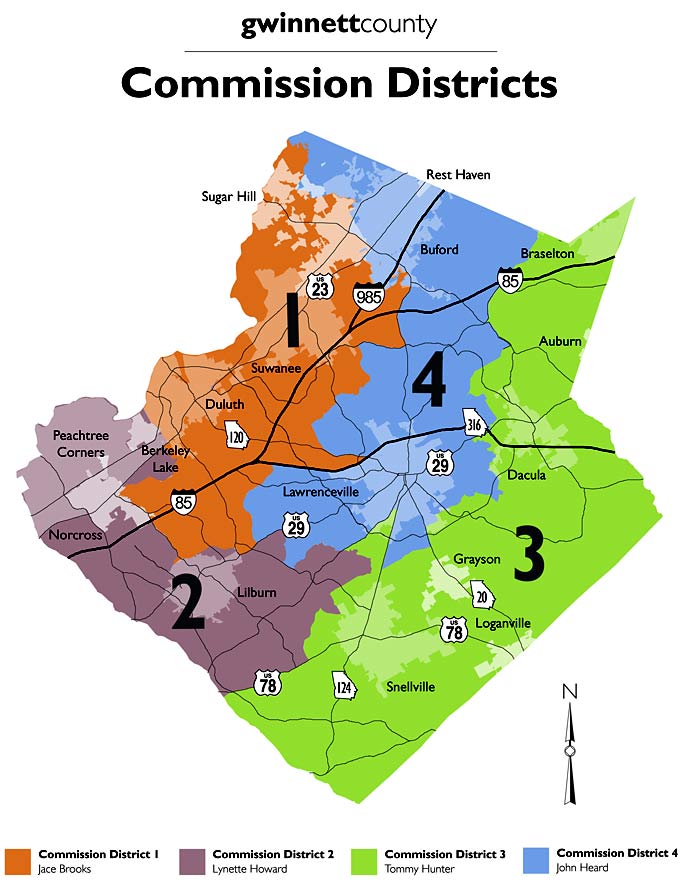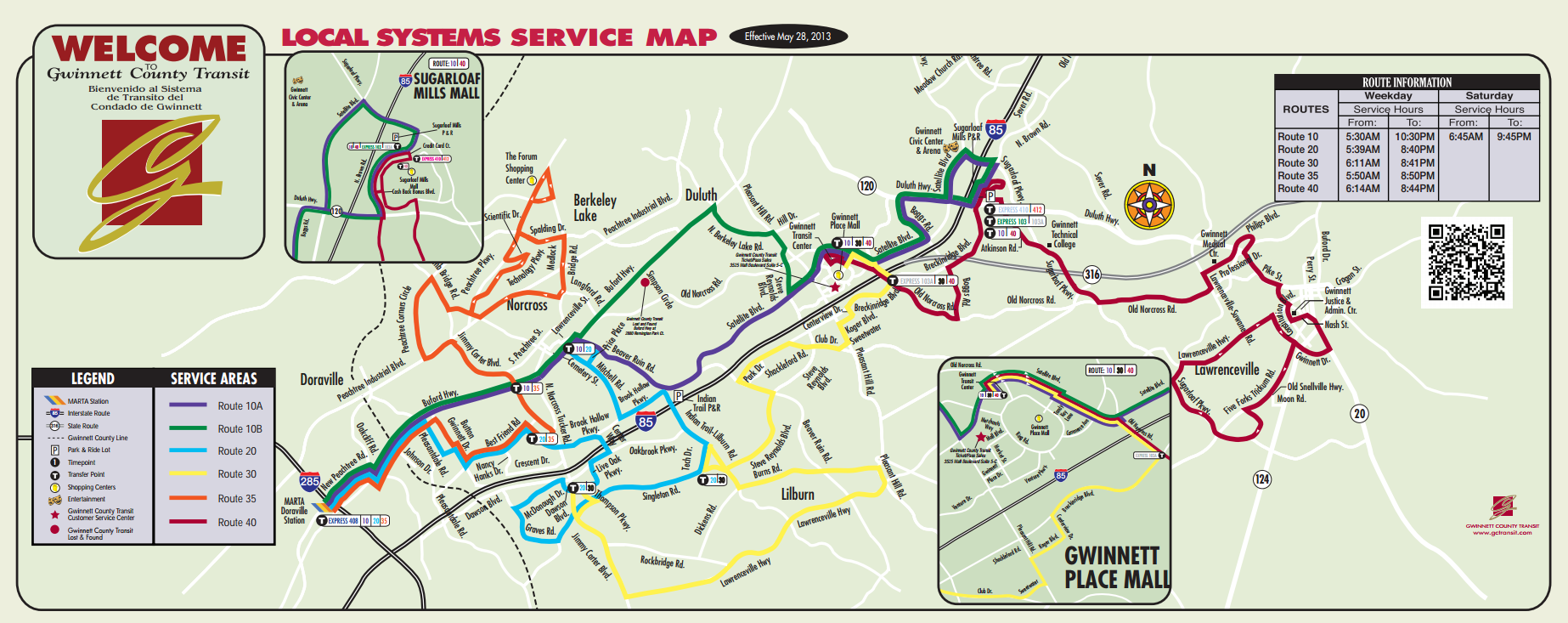 |
| Silicon Valley products have become an integral part of our everyday life |
I
love my iPhone. I have to admit that my phone is an integral part of my life; sometimes it feels like an extension of me. Looking at its contents and apps, you get a snapshot of me and my life. You'll find Snapchat, Twitter, Facebook, Tinder, Spotify, YouTube, the Atlanta Business Chronicle, the Irish Independent, Dublin Bus, Uber, myTaxi, Blackboard, wordreference, GCN, daft.ie, vipsy, and so many other apps that I use on a weekly basis. It screams out who I am without being a physical part of me at all. So...in the palm of your hard (literally at this moment since over half of my readers view this blog from their smartphone), you can probably find a neat and clear biography of yourself in the tools, apps, and networks you've packed into your smartphone.
The tech industry and its innovations are undoubtedly essential to our lives and how we live. Companies like Apple, Amazon, Google, Microsoft, Facebook, and Samsung have changed our lives forever with their products. You can't help but sometimes marvel at the power and amount of information we literally have in the palm of our hands; it's actually incredible! But how have these companies impacted the places where they live and is it all so rosy and pink in their tech boom bubbles?
 |
| What Santa Clara Valley once looked like- covered in green orchards |
In this blog, I would like to take you to a place back in time before all these companies existed. Its Santa Clara Valley in 1980. Located in between San Francisco and San Jose, this valley is home to a few sleepy hollow towns, a prestigious university, and extremely fertile agricultural land. In fact, Santa Clara Valley orchards produce some of the best, most plentiful fruit in California. Its fruits are sold nationwide and people associate Santa Clara Valley as California's most fertile region.
Next, as we all know this all-American story, Steve Jobs and his college mate dropouts develop Macintosh computers in a suburban garage outside Palo Alto. Stanford University becomes a breeding ground for fresh, new, innovative ideas. Companies like Apple, Microsoft, Intel, Google, all base themselves near Stanford in Santa Clara Valley. The region transforms from sleepy hollow to global icon as it is renamed Silicon Valley. It encapsulates the American Dream, its story of hard work and homegrown ingenuity. Ask any American about Silicon Valley and the products created there, and they will probably proudly list off its companies and their inventions that changed the world.
But what about the original Santa Clara Valley, the place we called Silicon Valley before silicon was struck? In my opinion, its a sad tale which revolves around bad planning (surprise!). Driving through Santa Clara Valley today, you would be hard pressed to find any remaining orchards or farms. They have all been converted into bland housing estates, simple strip malls, and geometric office parks. For what was California's most productive region agriculturally, this is a surprising turn of events. Of course net productivity has increased from the outflow of creative capital, but I can't help but wonder if the Santa Clara Valley of the past could have coincided with the Silicon Valley of now.
Now, I want you to look at your smartphone again. With all its innovation and ingenuity, its a piece of metal that required so much thought and energy I would like you to picture the kind of place that created it.
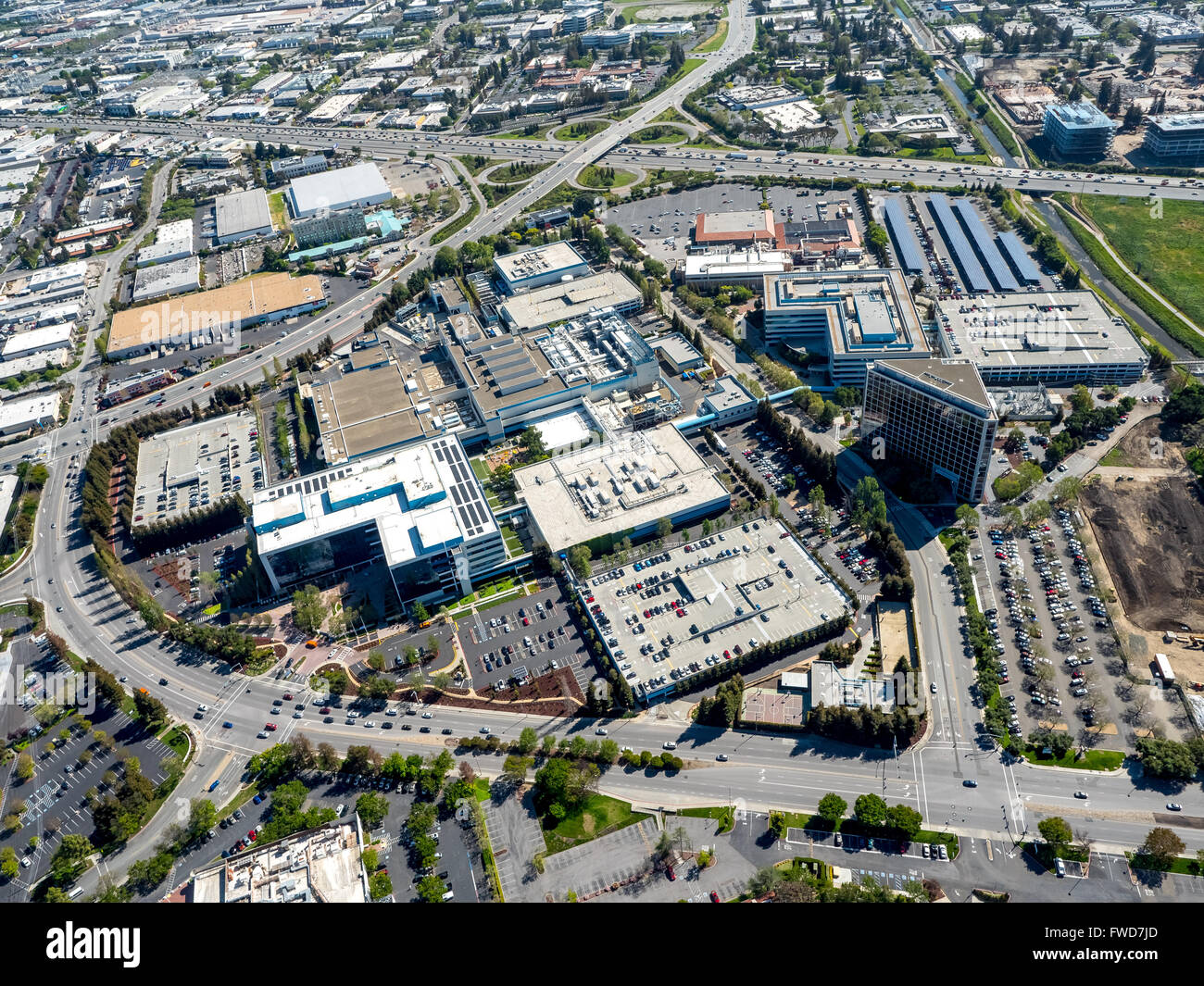 |
| Intel's Headquarters in its bland suburban location - note the plethora of parking and parking garages! |
Driving through the Silicon Valley of today, you will find a non-descript suburban landscape that matches any banal image of American suburbia. This landscape exudes little thought or energy. Its office parks are drab, boring, sprawling, unwalkable, and all-together unremarkable despite housing the world's most innovative industry. Its malls and shopping centres house the shops and brands of high couture and top-of-the-line products while on the exterior, offering nothing more than a big box look. Its housing estates stretch for miles in all directions swallowing up miles of rich soil for ranch-style homes and two-door garages. The urban design of Silicon Valley is a design synonymous with any other American edge city: unplanned, congested, and sprawling.
When I first discovered what Silicon Valley looked like, I was kind of shocked. How could the world's most exciting industry be contained in a setting that matched my own raising? But when my professor asked the class to picture in our head what Silicon Valley looks like, my mind wasn't able to muster any iconic image while it could clearly imagine Wall Street, Rodeo Drive, and even a Main Street in small town America.
 |
| Aerial view of Silicon Valley |
So there is definitely some doom in tech. The tech giants swallowed up Santa Clara Valley and the planners, politicians, and designers let these companies do this with no fight or push back. Hundreds of miles of California's most fertile soil was lost to urban sprawl. The United States' most influential industry is housed in a setting that one would choose to fly past on the expressway. Could this have been avoided? Of course (in my opinion)! Instead of letting office parks fly upward and outward to match the pace of growth, planners could've funneled growth along the rail corridor that passes through the valley between San Francisco and San Jose. Mixed-used development, higher densities, limiting expressway building, funding rail transport, and enacting smart growth all could've enabled Silicon Valley to look remarkable different (and more interesting) than the unrecognizable giant it is today.
And how about now, in 2018? Have tech industries changed their tune on how they want to grow, develop, and design their businesses within already existing regions?
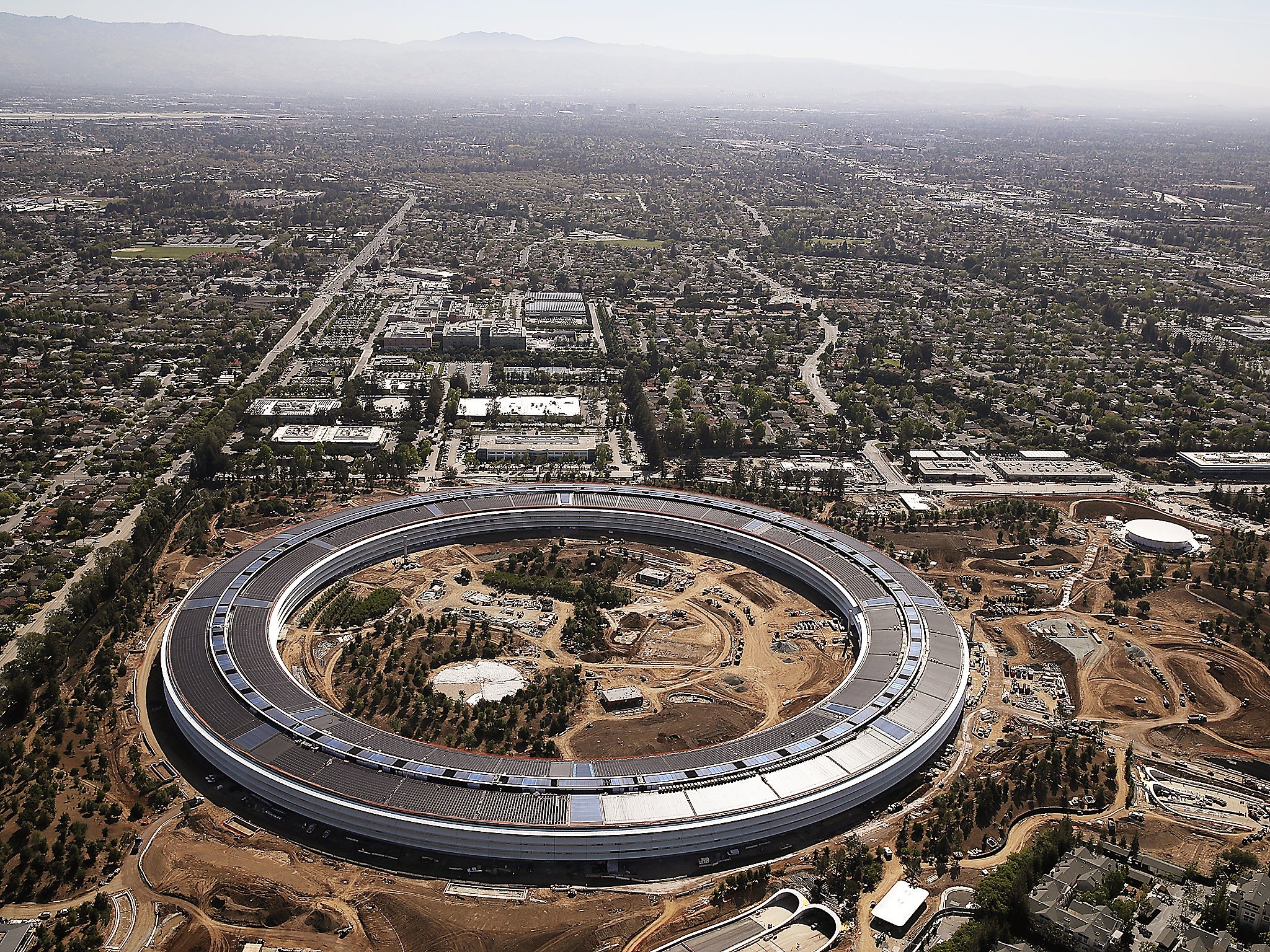 |
| Apple's New Headquarters in Cupertino |
. . . NO! Of course not! Apple is building a sprawling "infinity" campus in Cupertino that while offering the latest services inside the building, does fuck all to the urban form of its area. The massive, unwalkable complex will require high car dependency to access the campus while the sprawling nature of the low density office block only blots out more of Cupertino's street grid since the municipality had to recede several blocks of already existing housing to make way for their tech giant. Elsewhere in Silicon Valley, private bus companies use public roads to commute tech workers to Google, Facebook, and Microsoft in the valley from their "cool" homes in San Francisco. Instead of investing in smarter, craftier design in new or retrofitted places with better walkability and public transportation access, tech companies are wholly disinterested in the region they call home. They are content with building their empires in closed off, private suburban office parks. While they are entitled to do so, the people of Santa Clara Valley are also entitled to call out the tech companies for their strain on public infrastructure and resources. Calling for better planning and mitigating the sprawl of the valley should be a priority moving forward for these towns, but with the power, money, and disinterest from their tech industry, building better communities will always be an uphill fight.
 |
| Amazon's Skyscraper Headquarters in Downtown Seattle |
In Seattle, a similar situation is playing out. Amazon's growth has "outpaced" the size of the city, so Jeff Bezos has created a competition between twenty different regions for Amazon's second North American headquarters. I find this to be cop out though. Instead of working within Seattle's existing framework and around the city's parameters for how to grow and develop sustainably, Amazon is choosing to stop investing in Seattle because the company could no longer control how it wanted to grow. When the city began asking Amazon to start investing in affordable housing, in better transportation, in its neighbourhoods, Amazon motioned to build a new headquarters elsewhere instead of collaborating with the city it puts an immense pressure on. What Seattle is asking of Amazon isn't insane. The city wishes to see Amazon contribute more to the public system it relies off of for growth. What is insane, is that Amazon has flat out denied its taxing nature on the public infrastructure it uses. Instead, it has used this situation to create a media frenzy for its search for a new city it can conceivable chew up and spit out in a fashion the company sees fit.
This is wild to me because cities are practically giving up their rights in competition for the new Amazon Headquarters. Instead of focusing on the people already living in their regions, cities would rather throw billion dollar tax incentives at Amazon in hopes of a tech boom that Seattle and Silicon Valley have undergone. As this blog has pointed out though, not all is so rosy in these tech booms.
Another case study of the tech boom and city making is in its European headquarters in Dublin, Ireland. Enticed to Dublin by Ireland's 12.5% corporate tax rate, the tech industry has set up shop in the docklands, an area the Dublin City Council has set aside for foreign direct investment. Walking through the docklands today, you will find modern, glassy five-storey blocks of offices, commercial space, and luxury apartments. Cranes tower over the area and most buildings are still under construction as the tech boom is in full swing. At the moment, one in four people in Dublin work with the tech industry. This percentage is only expected to rise as these tech companies complete and grow out their European headquarters, so the tech industry and its impact on Dublin is already making waves.
 |
| Dublin Docklands undergoing significant construction |
Recently, I went on a walk through the docklands. While each building was interesting in its post-modern architecturally-designed way, for the most part, a walk through the docklands is quite boring. Its better than a walk through Silicon Valley I imagine, but looking at each building, I would be surprised to find that companies like Google, LinkedIn, Facebook, Apple, and Microsoft were nestled inside them. Furthermore, I occasionally came across a remnant of the Dublin Docklands of the past: an old stone warehouse, a block of Georgian homes, a rundown pub. These little relics remind me that so much has changed here so fast. The docklands were such a critical piece of Dublin history, its disappointing to know that so much of it has disappeared in the name of economic development. And when I turned around and took in all the modern glory that is now the docklands and its tech boom, I couldn't help but think that this isn't Dublin at all. Even in an European context where planning law is more prominent and strict in city making, tech companies ignore urban design and choose to ram unconscious, sterile building for their own growth and development.
Looking forward, I hope the last remaining parts of the original docklands are conserved. The docklands can be regenerated without driving out what made the area its namesake. The tech industry will undoubtedly house itself in every crevice that the docklands have to offer (its a small area), but it can do so in a manner that is conscious of its surrounding and its historical precedents. As foreigners continue to pour into the docklands, Dublin City Council should do more to protect a part of the city that is just as critical to its past as the City Centre is. But if the tech industry has shown us anything, its hard to stop a boom even when you are aware of impending doom.
*Note: I am thinking of doing a part two to "Tech Boom or Doom?" that focuses more on the social impacts of the industry as this post tried to focus on the tech industry's impact of urban design








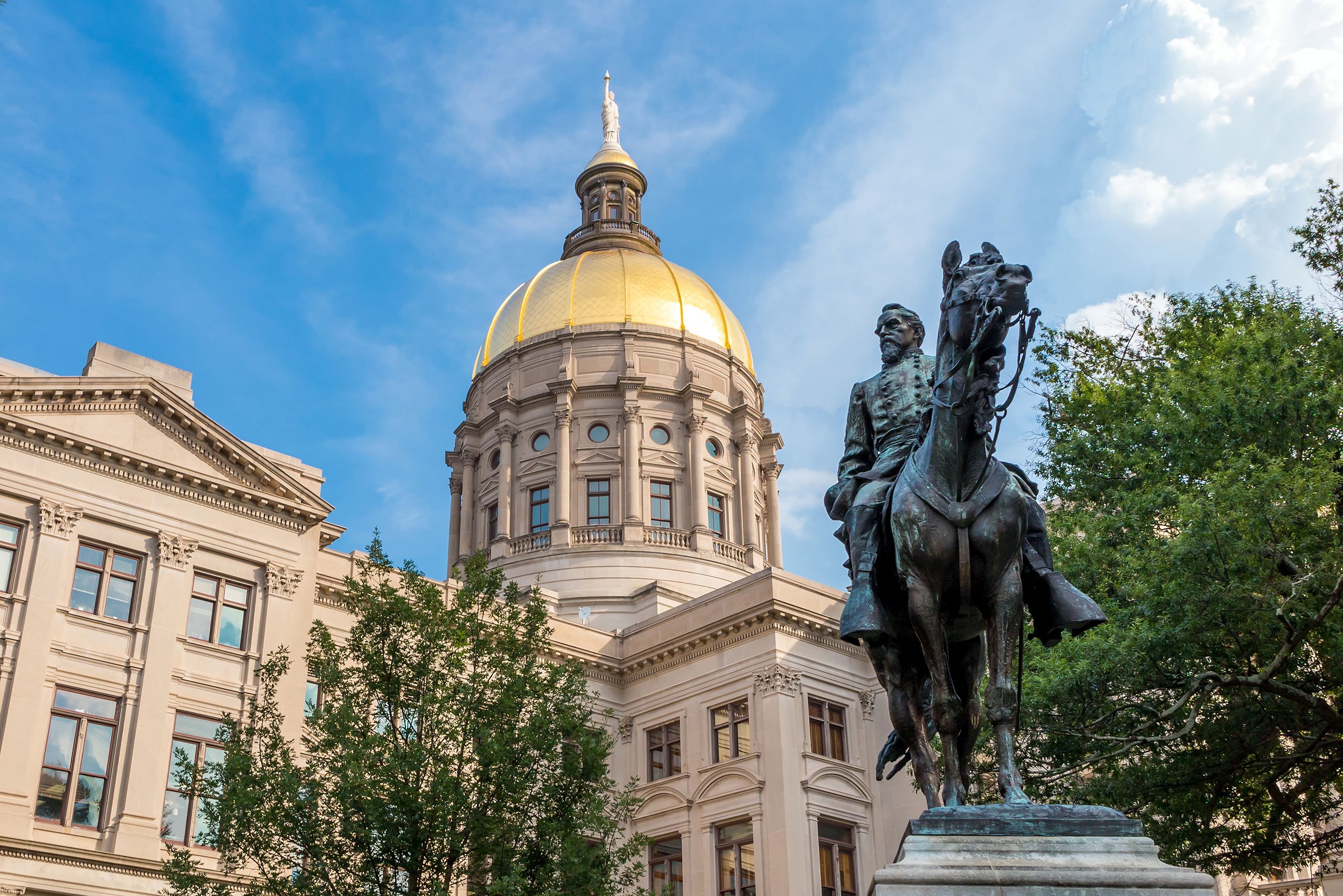
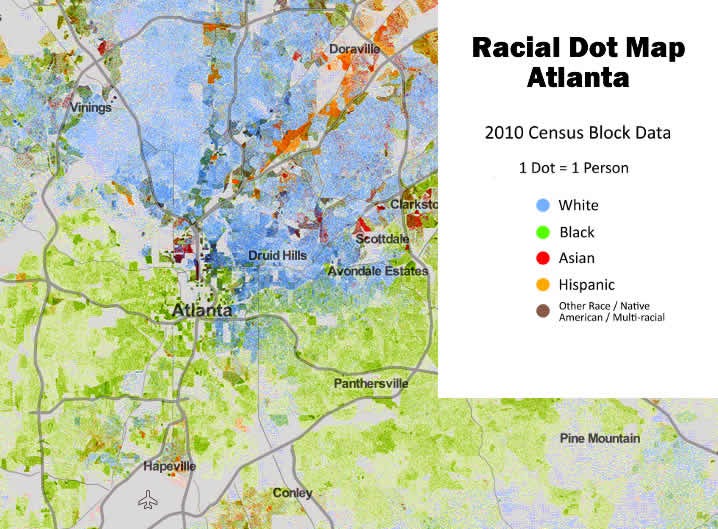
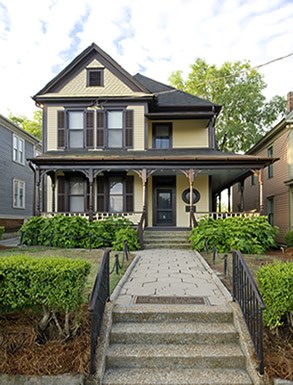








/cdn.vox-cdn.com/uploads/chorus_image/image/47923781/NO_20MARTA_20Sign_20_281280x778_29.0.jpg)
